
16-11-2025 21:09
 Robin Isaksson
Robin Isaksson
Anyone recognize this acc. to pictures.? Found on

14-11-2025 16:26
 Marian Jagers
Marian Jagers
Hello everyone, On dead wood of Cytisus scoparius

15-11-2025 23:22
Mario FilippaHello,this is what I think to be Hymenoscyphus mac

15-11-2025 20:25
 Riet van Oosten
Riet van Oosten
Hello, Found by Laurens van der Linde, Nov. 2025

14-11-2025 18:31
 Lothar Krieglsteiner
Lothar Krieglsteiner
Hello,can somebody provide me with a file of:Rothe

12-11-2025 09:25
 Viktorie Halasu
Viktorie Halasu
Hello, I need help with a pale terrestric Pseudom

11-11-2025 20:16
Bohan JiaHi, lastly I have found these tiny yellow decayin

09-11-2025 13:20
Hello.A tiny ascomycete, appearing as erupting gra
Pyrenopeziza
Guy Buddy,
29-04-2020 18:52
I found these fruits on dead stems of Hydrangea arborescens in Pennsylvania, USA. Apothecia when fully opened 1-2mm. Spores in H20 measure (8.7) 11.6 - 15.6 (16.2) × (2.1) 2.3 - 3.2 (3.5) µm, Q = (3.7) 3.8 - 5.7 (6.6) ; N = 15, Me = 13.4 × 2.7 µm ; Qe = 4.9. Spores obovoid, aseptate even in the ascus, smooth. Asci measure ~50-60 x 9-10 um. IKI + blue. Paraphyses filiform. Hairs on outside appear smooth.
I was thinking maybe P. fracta, which has been reported on Hydrangea before, spore size and shape match, but I am not sure.
Best,
Devin
Hans-Otto Baral,
29-04-2020 20:36

Re : Pyrenopeziza
This sounds a reasonable ID. Do you have literature which gives a spore size? Perhaps Seaver? The old authors don't give but mention the oblong clavate spore shape. I dod not hear of this species so far.
Guy Buddy,
30-04-2020 00:38
Re : Pyrenopeziza
Hey Hans,
P. fracta was from Linnean Society of London, 1904 that I pulled from Google. I am not confident on that and the name might be outdated or not even valid. I dont have much literature on this genus except Gremmen 1958, which depending on if "the receptical is verrucose or hairy" keys me out to Section 1, subsection b or Section 7 Trichantina, which includes P. escharodes. E. Rubio's micrographs of escharodes compares to what I am seeing with my specimen, thats as far as I have gotten.
Devin
P. fracta was from Linnean Society of London, 1904 that I pulled from Google. I am not confident on that and the name might be outdated or not even valid. I dont have much literature on this genus except Gremmen 1958, which depending on if "the receptical is verrucose or hairy" keys me out to Section 1, subsection b or Section 7 Trichantina, which includes P. escharodes. E. Rubio's micrographs of escharodes compares to what I am seeing with my specimen, thats as far as I have gotten.
Devin
Hans-Otto Baral,
30-04-2020 10:06

Re : Pyrenopeziza
Oh yes, I see. So you have larger spores, maybe because they are alive.
The spores are larger than in P. escharodes. I suppose when you repeatedly collect this species on Hydrangea and it has always such large spores, it would be a hint on a good species. Otherwise only DNA will help to clarify this taxon.
Zotto
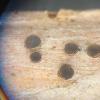
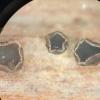
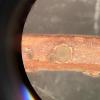
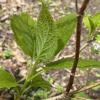
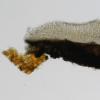

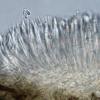
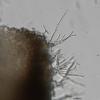
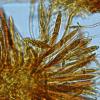
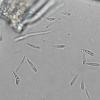
 3C9DCC10-E86A-4EC5-A271-50B2F0010C53-0001.jpeg
3C9DCC10-E86A-4EC5-A271-50B2F0010C53-0001.jpeg